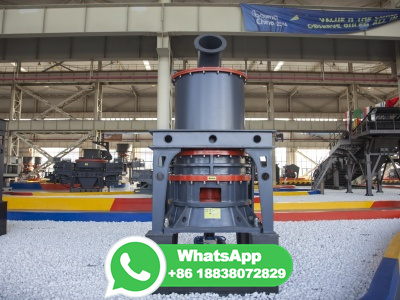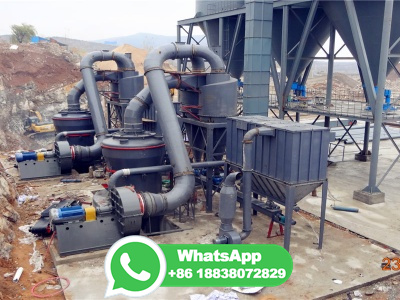Coal | Uses, Types, Pollution, Facts | Britannica
Coal is defined as having more than 50 percent by weight (or 70 percent by volume) carbonaceous matter produced by the compaction and hardening of altered plant remains—namely, peat deposits.

Coal is defined as having more than 50 percent by weight (or 70 percent by volume) carbonaceous matter produced by the compaction and hardening of altered plant remains—namely, peat deposits.

Bessemer converter, schematic diagram. The Bessemer process was the first inexpensive industrial process for the mass production of steel from molten pig iron before the development of the open hearth key principle is removal of impurities from the iron by oxidation with air being blown through the molten iron. The oxidation also raises the temperature of the iron mass and keeps it ...

Coal is a nonclastic sedimentary are the fossilized remains of plants and are in flammable black and brownishblack tones. Its main element is carbon, but it can also contain different elements such as hydrogen, sulfur and oxygen. Unlike coal minerals, it does not have a fixed chemical composition and crystal on the type of plant material, varying degrees of ...

In surface mining, the ground covering the coal seam (the overburden) is first removed to expose the coal seam for extraction. The elements of a surface mining operation are (1) topsoil removal and storage for later use, (2) drilling and blasting the strata overlying the coal seam, (3) loading and transporting this fragmented overburden material (called spoil), (4) drilling and blasting the ...

Steelmaking. Steel mill with two arc furnaces. Steelmaking is the process of producing steel from iron ore and/or scrap. In steelmaking, impurities such as nitrogen, silicon, phosphorus, sulfur and excess carbon (the most important impurity) are removed from the sourced iron, and alloying elements such as manganese, nickel, chromium, carbon and ...

Gasification is a technological process that can convert any carbonaceous (carbonbased) raw material such as coal into fuel gas, also known as synthesis gas (syngas for short). Gasification occurs in a gasifier, generally a high temperature/pressure vessel where oxygen (or air) and steam are directly contacted with the coal or other feed material causing a series of chemical reactions to ...

Coal Tar: The process of making coke and coal gas from coal results in the production of coal tar, a thick, dark liquid. It has several industrial and medical applications. Coal Gas: It is a gaseous mixture primarily composed of carbon monoxide, methane, and hydrogen that is produced during destructive distillation.

pyrolysis, the chemical decomposition of organic (carbonbased) materials through the application of, which is also the first step in gasification and combustion, occurs in the absence or near absence of oxygen, and it is thus distinct from combustion (burning), which can take place only if sufficient oxygen is present. The rate of pyrolysis increases with temperature.

Save Article. sukanya sitthikongsak // Getty Images. "Clean coal" usually means capturing carbon emissions from burning coal and storing them in underground pockets of porous rock. While ...

The Bessemer Steel Process was a method of producing highquality steel by shooting air into molten steel to burn off carbon and other impurities. It was named after the British inventor Sir Henry Bessemer, who worked to develop the process in the 1850s. While Bessemer was working on his process in England, an American, William Kelly, developed ...

Coal is a fossil fuel and has been generating electricity in Great Britain since the industrial revolution. But the decarbonisation of the grid will see it phased out by the end of 2024. In 1882, Thomas Edison's Holborn Viaduct coal plant started generating electricity for public use. It was the first power station of its kind, burning enough coal to provide energy to light 1,000 lamps in ...

A coal mining car at Lackawanna Coal Mine in Scranton, Pennsylvania Coal miners exiting a winder cage at a mine near Richlands, Virginia in 1974 Surface coal mining in Wyoming, A coal mine in Frameries, Belgium. Coal mining is the process of extracting coal from the ground or from a mine. Coal is valued for its energy content and since the 1880s has been widely used to generate electricity.

What Is Coal Preparation? • Coal preparation is the removal of undesirable material from the RunofMine (ROM) coal by employing separation processes which are able to differentiate between the physical and surface properties of the coal and the impurities. Through coal preparation, a uniform product is achieved.

There are three steps to the CCS process: 1. Capturing the carbon dioxide for storage. The CO 2 is separated from other gases produced in industrial processes, such as those at coal and naturalgasfired power generation plants or steel or cement factories. 2. Transport

Mining coal. Coal miners use large machines to remove coal from the earth. Many coal deposits, called coal beds or seams, are near the earth's surface, but others are deep mining methods allow coal miners to easily reach most of the nation's coal reserves and to produce about three times more coal in one hour than in 1978.

Vocabulary Coal is a black or brownishblack sedimentary rock that can be burned for fuel and used to generate electricity. It is composed mostly of carbon and hydrocarbons, which contain energy that can be released through combustion (burning).

The process was later applied industrially to generate heat and power. In the 1930s, synthetic fuel production from coal became important during World War II as crude oil supplies were interrupted. In the 1970s, during the energy crisis, interest in gasification escalated as a way to generate synthetic natural gas from coal.

71,757 How is Coal Formed? The formation of coal takes millions of years, which is why it is an exhaustible and nonrenewable natural resource. It was formed around 300 million years ago when the earth was covered with swampy forests. When plants in these forests mainly trees, mosses, ferns, and reeds died, they fell into the swamps.

A thermal power plant is one kind of plant or system, which is used to produce electrical power by using thermal energy. Fig. 1 Thermal power plant. Coal is mainly used as fuel. Normally brown, bituminous, and peat coals are widely used. Water is used as secondary fuel which helps to transfer thermal energy from coal.

Thermalbased power plants can produce electricity from coal or other fuel sources. The coalfired process requires three different steps to turn energy released from burning coal to generating electricity for consumption. Coal fired power plants, while producing power, require a lot of water and produce a lot of pollutants like ash and CO2. Learn how the process works as well as interesting ...

Coal is processed in industry to get some useful products such as coke, coal tar and coal gas. Coke is a tough, porous and black substance. It is an almost pure form of carbon. Coal tar is a black, thick liquid with an unpleasant smell. Coal gas is obtained during the processing of coal to get coke. Uses of coke, coal gas and coal tar are given ...

The movement of carbon from reservoir to reservoir is known as the carbon cycle. Carbon can be stored in a variety of reservoirs, including plants and animals, which is why they are considered carbon life forms. Carbon is used by plants to build leaves and stems, which are then digested by animals and used for cellular growth.

Thermal Power Plant is an electric producing power plant in which fuel (such as coal, liquefied fuel, uranium, and natural resources) is used to generate heat and that heat is further utilized to heat the water to make steam and that steam is used to rotate the turbine and further electricity generates with the help of 3 phase supply generator. ...

Coal Plant Matter, Carbonization, Sedimentary Rocks: It is generally accepted that most coals formed from plants that grew in and adjacent to swamps in warm, humid regions. Material derived from these plants accumulated in lowlying areas that remained wet most of the time and was converted to peat through the activity of microorganisms.

How Is Coal Formed A Process Spanning Eras Updated on High School 5 min read Like oil and natural gas, is a fossil . It started forming over 350 million years ago, through the transformation of organic plant matter. © THINKSTOCK Coal was formed more than 300 million years ago.

Historical background. Coal liquefaction originally was developed at the beginning of the 20th century. The bestknown CTL process is FischerTropsch synthesis (FT), named after the inventors Franz Fischer and Hans Tropsch from the Kaiser Wilhelm Institute in the 1920s. The FT synthesis is the basis for indirect coal liquefaction (ICL) technology.